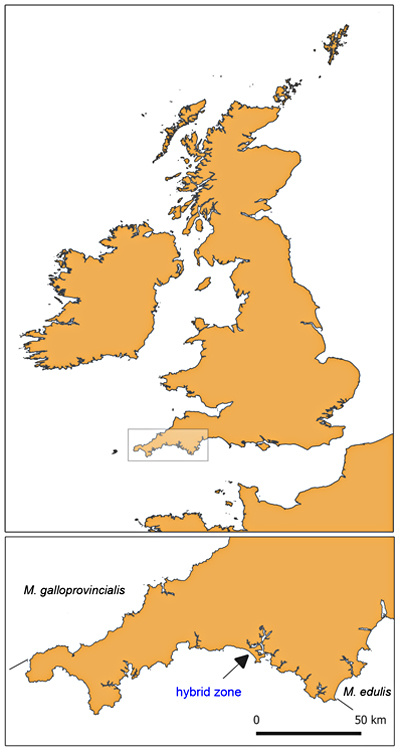Hybridization among related species is now recognized as a prevalent process. While ongoing hybridization is a common feature of modern biodiversity, there is also increasing evidence of ancient hybridization events that are preserved in the genomes of extant species. Despite the prevalence of hybridization, we still know relatively little about how modern hybrid zones may persist for indefinite periods and how genomes are “stabilized” following hybridization. Traditional models of hybridization argue that hybrid zones may be stable if selection against hybrid genotypes occurs within the zone, and this is offset by migration from neighboring parental populations into the zone. On the other hand, current reviews suggest that the dynamics of hybrid zones and the forms of selection that operate within them may be considerably more complicated.
An excellent example of the potential complexity of genetic and environmental processes that may stabilize a hybrid zone is the extensively studied hybridization between the mussels Mytilus edulis and M. galloprovincialis in the eastern Atlantic. In this region, multiple hybrid zones naturally occur between these two sister species. The best studied of these hybrid zones occurs in southwest England, where it has persisted for at least 30 years with little evidence of either contraction or expansion. Yet, migration occurs out of this hybrid zone into neighboring parental populations, which should cause this hybrid zone to be unstable and dissipate according to traditional models of hybridization.

To explain the persistance of this hybrid zone, Allison B. Willis, her mentor Dr. Jerry Hilbish and their collaborators tested the hypothesis that selection in different components of the life cycle may stabilize a hybrid zone. Within the southwest England zone, strong directional selection occurs among adults that favors genotypes with alleles from M. galloprovincialis. However, marine mussels have complex life cycles that include a sedentary adult phase and a free-swimming larval stage. Consequently, adult and larval life-history stages are ecologically independent of one another. In addition, a mussel undergoes radical metamorphosis several times during development, which includes large changes in patterns of gene expression that may result in altered patterns of selection. In their new study titled "Integration of natural selection across the life cycle stabilizes a marine mussel hybrid zone", Allison and her collaborators tested and rejected the hypothesis that differences in fecundity may select for M. edulis alleles within the hybrid zone. They also tested the hypothesis that selection during the larval stage may counter selection against M. edulis alleles in the adult stage, and found that selection favors M. edulis alleles during the veliger stage of larval development. The direction and strength of selection during the larval stage are sufficient to counter strong selection during the adult portion of the life cycle. Altogether, these data show that the hybrid zone is stabilized by opposing forms of directional selection operating in different portions of the life cycle.